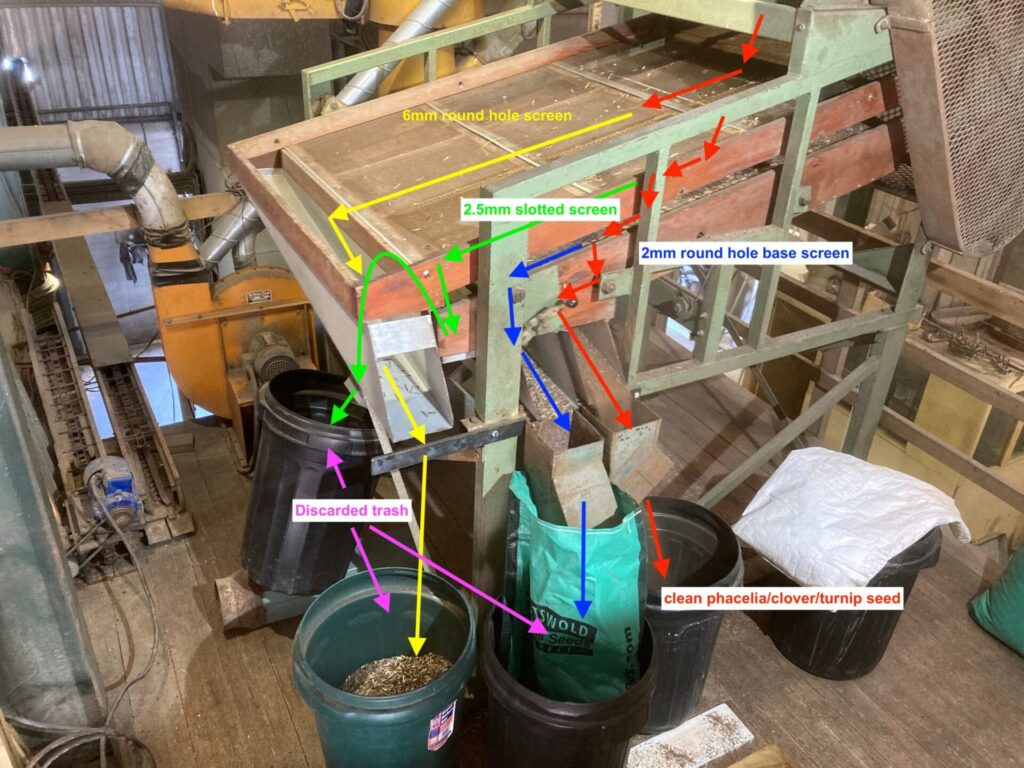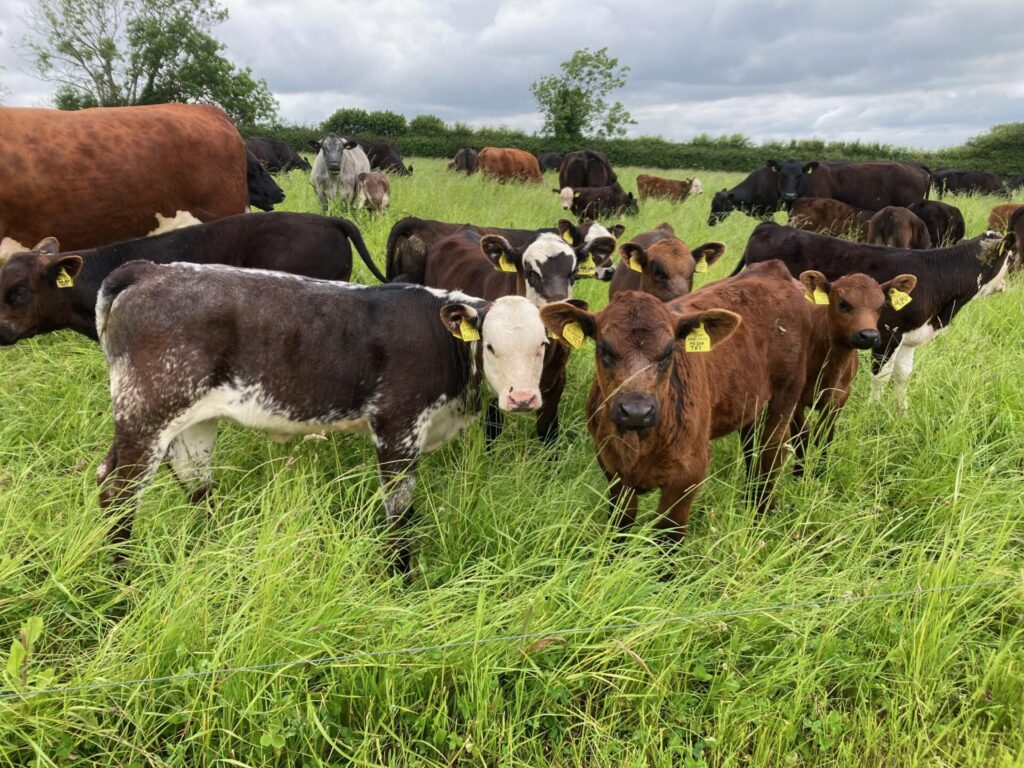From cover crops to clever seed mixing, George Hosford is balancing the harvest chaos with new technology and sustainable farming practices

It seems so long ago that we started harvest, way back in mid July – it turned out to be one of those long drawn out affairs, very much stop/start due to the weather. We started with cutting the plot of turnips destined for sowing again this year as seed in our cover crop mixes, swiftly followed by the crimson clover plot for the same purpose, and then the phacelia. Since they were all sown in autumn, they ripened much earlier than the buckwheat, vetch and camelina, which need to be sown in spring as they rarely survive the harsh winter cold.
Staying on the cover crop theme, we have ramped up our seed mixing system a good deal this year. We have purchased a selection of Tote Bins that each hold up to 1.5 tons of grain or seeds, and a brand new pan mixer (usually intended for mixing concrete!). These additions have revolutionised the set up. Formerly we were hand-blending purchased bags of seeds into a feed barrow, then bagging up 20kg at a time … all a bit tedious after the first 20 bags! Now we are mixing 600kg at a time, using mainly home-grown seeds which have been combined, dried if necessary, placed in a Tote Bin, then weighed directly into the mixer. The mixer sits on a pair of weigh bars, which are another essential ingredient for this new system. Once mixed, the blend – often containing up to drying, which I had hoped would shrivel them smaller and make them easier to remove, far too many remain. A cleaning charge will have to be faced, as running over a gravity separator off-farm may be the only way to clean them out.
Modern farmers will be yelling at the screen right now, asking why on earth did we not use more weedkiller to solve the cleaver problem? But the simple answer is, we couldn’t, because the contract we have with Wildfarmed for combination crops stipulates no weedkiller or fungicide, and only limited amounts of artificial fertiliser.

What are cover crops?
‘We plant cover crops, also known as “green manure”, in fields that will be left fallow over the winter before a spring crop is sown,’ says George. ‘These crops protect the soil from harsh weather and absorb any remaining nutrients from the previous crop, preventing them from leaching into watercourses.’
However, early gross margin calculations are showing that these two particular combinations have performed significantly better than any solo spring bean or linseed crop, and in fact compare favourably with our other crops, apart from the first wheats.
The winter wheat with beans blend, however, was awful: riddled with disease and very short on yield, despite having looked strong for much of the season.
The lateness of sowing the spring wheat/bean blend put the lid on our yield hopes, but we hoped it would be better than the winter blend. We were very pleased, then, to find the wheat met quality standards, and should get the full premium, leading to a useful margin compared with our other crops.
The millet looked fantastic throughout the summer, but knowing when to cut was a challenge, as the leaves were still very green when the seeds were beginning to turn.
As I write at the end of September, I am still drying that darn millet: it’s now had six runs through the drier. I think we cut it a bit early due to trying to beat forecast rain.


Homemade pig porridge
Three very greedy young pigs were with us for the summer, enjoying an entirely home-grown diet for the first time. Our local mobile feed wagon called in to mill up some wheat, barley, peas and beans, to which I add 10 per cent protein-rich rape meal from which we have already squeezed the oil, and mixed the lot into a yummy porridge. They appear to approve the recipe, anyway, slurping it down in seconds. And they are certainly growing well on it – they look like they will perform at least as well as their predecessors who were fed on purchased weaner pellets (which no doubt contain imported soya from who knows where).
- You may by now be thinking that I am a little obsessed with cover crop seeds and grain store activity. But that is the nature of harvest for the old man left in the farmyard while everyone else swans
around in super-cooled hi tech cabins with satnav doing all the steering …
Read 15 years of George’s monthly farm diary on
viewfromthehill.org.uk




